21 Wild Animals in Libya [Wildlife in Libya]
Want to know more about the wildlife in Libya?
Discover 21 wild animals in Libya in this post, as well as interesting facts about them. 🇱🇾
Learn All About Libyan Animals
Ready to learn all about Libyan animals?
I’ve always been fascinated by animals, and by how they can be so different from one country to another. In this guide, we’ll focus on the many animals Libya has on the land, in the sky, and underwater.
I’ve split the guide into 6 categories:
- Native animals from Libya
- Endangered animals of Libya
- What is Libya national animal?
- How many animals native to Libya?
- Is Libya full of snakes?
- Are there giraffes in Libya?
Let’s dive in right away with our first category!
Native Animals from Libya
Libya is a large African country located in the northern part of the continent, above the Sahara. It is the fourth-largest country in all of Africa and the Arab World, has the tenth-largest oil reserves in the world, and used to be an Italian colony. It is bordered by Algeria, Egypt, Sudan, Chad, Niger, and Tunisia, and its capital and largest city is Tripoli, which counts more than 1,170,000 inhabitants (but more than 3,000,000 if you include the metropolitan or almost half of Libya’s population of 7 million inhabitants!).
An interesting part of the country that I wanted to tackle is its wildlife. In light of that, I have listed the best of it, and I hope you will love learning what animals live in Libya.
Here’s the Libya animals list.
1. Mediterranean monk seal
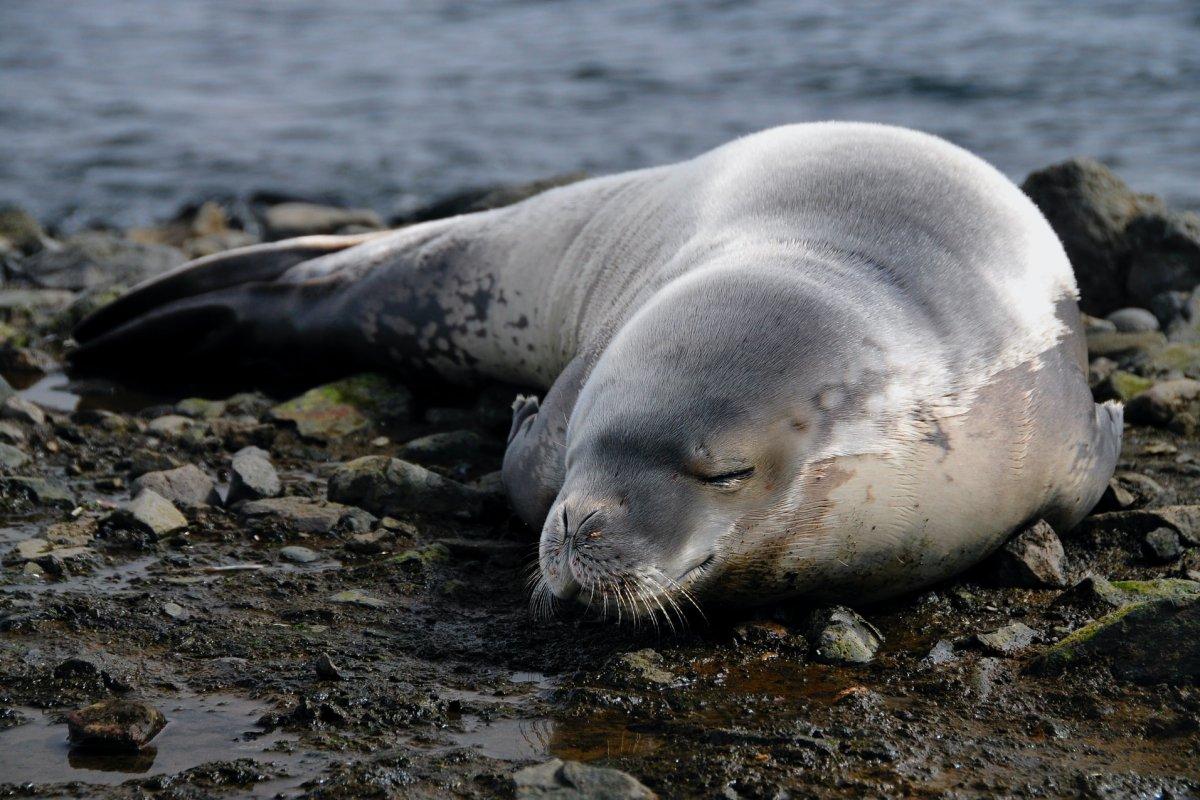
- Name: Mediterranean monk seal
- Scientific name: Monachus monachus
- Conservation status:
The Mediterranean monk seal is well known along the coast of Libya. It is a species of seal that feeds on a wide variety of fish and mollusks, mostly octopus, eels, and squids.
This seal is probably the world’s rarest pinniped, as fewer than 700 individuals remain in 3 to 4 subpopulations, scattered across the Mediterranean and the northeastern Atlantic Ocean. Interestingly enough, it appears in Greek mythology, notably in “The Odyssey”, where the sea god Proteus herds Mediterranean monk seals for Poseidon!
2. Fennec fox
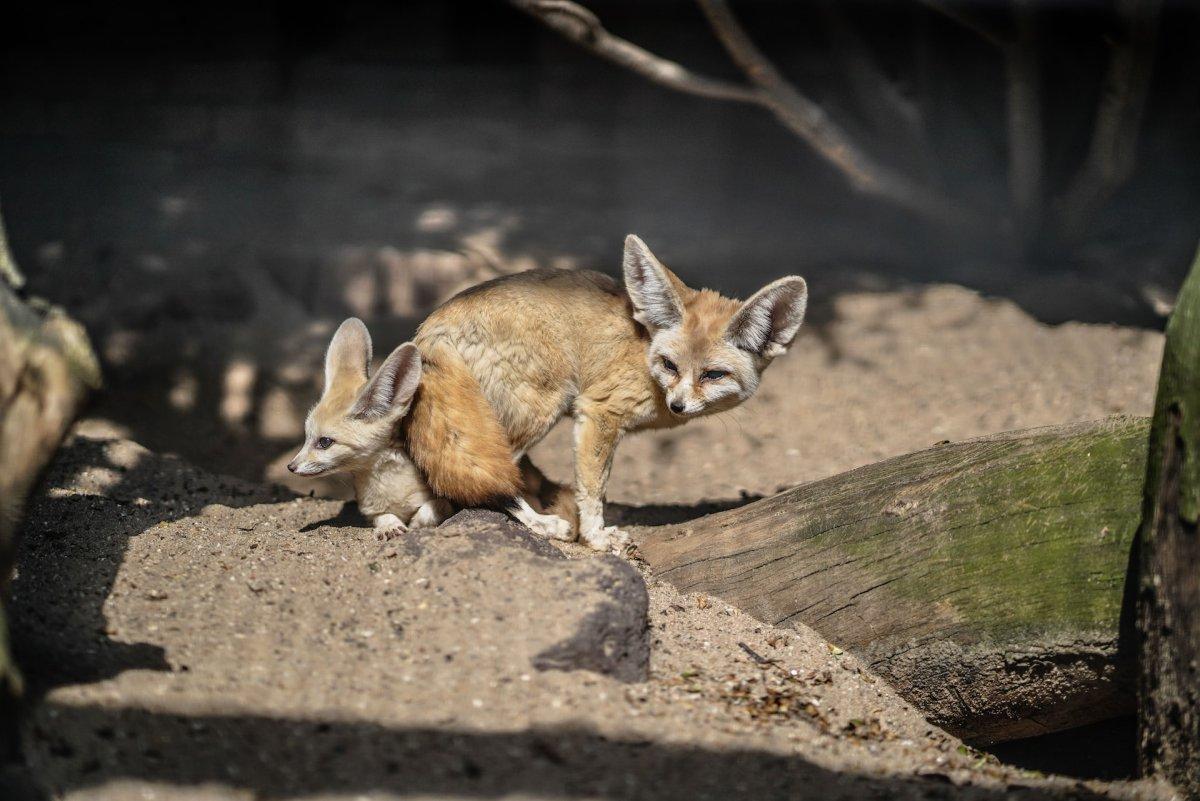
- Name: Fennec fox
- Scientific name: Vulpes zerda
- Conservation status:
The fennec fox is a small species of fox native to much of the Sahara and North Africa. It has characteristic, unusually large ears that are ideal to dissipate heat in the desert. It is the smallest canid in the world and can live up to 14 years in captivity and 10 years in the wild.
This fox is crepuscular and hides in its burrow during the day.
3. African wolf
- Name: African wolf
- Scientific name: Canis lupaster
- Conservation status:
The African wolf is a species of canine native to much of the northern half of the African continent, except for western regions and their rainforests. It was spotted as high as 1,800 m / 5,900 ft above sea level and is primarily a predator that feeds on mammals as large as gazelle fawns and invertebrates.
Previously thought to be a subspecies of the golden jackal, it has now been a species of its own since 2015. It is very present in North African folklore, where it is seen as untrustworthy, and where its body parts are used for ritualistic or medicinal purposes.
4. Common genet
- Name: Common genet
- Scientific name: Genetta genetta
- Conservation status:
The common genet is a small species of viverrid native to Africa; it has also been introduced to the Balearic Islands and southwestern Europe.
This mammal can be found almost anywhere north of the Sahara, usually in areas with dense vegetation. During the day, it rests among thickets or in hollow trees, and it emerges at night to feed on small mammals, birds, lizards, and amphibians, among other food sources.
5. African wildcat
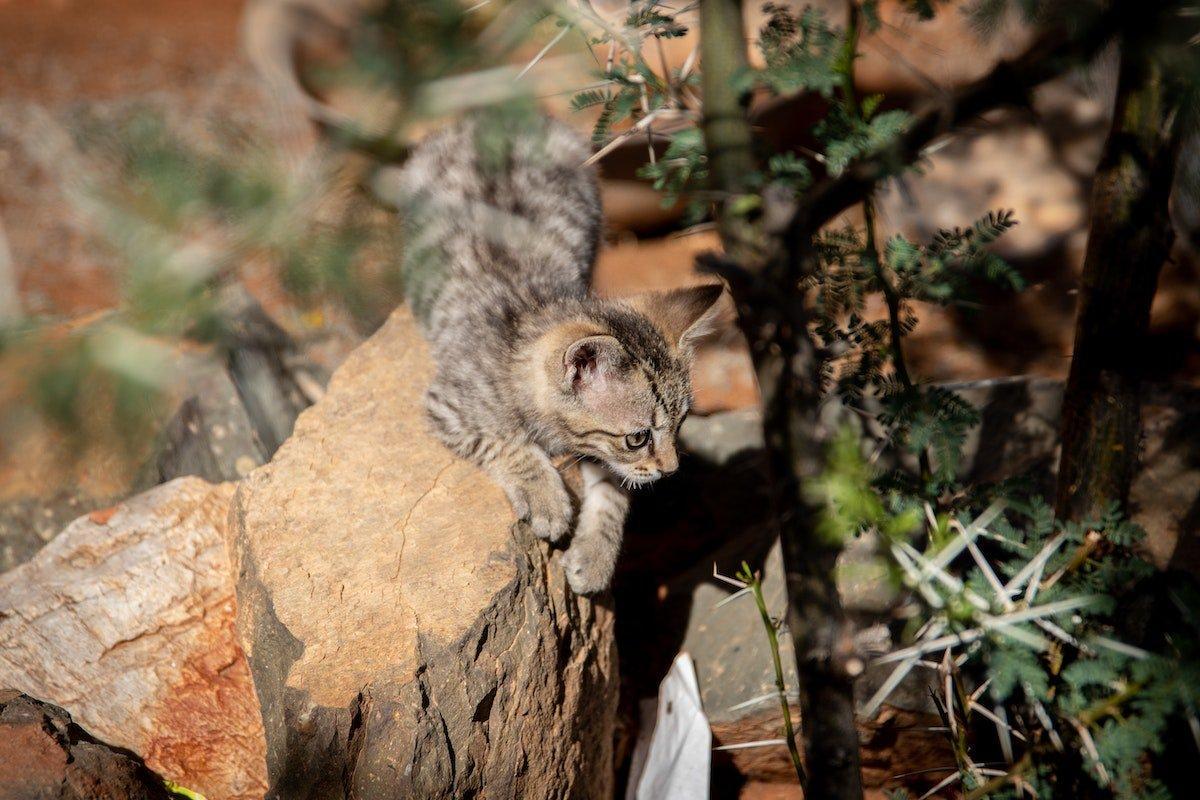
- Name: African wildcat
- Scientific name: Felis lybica
- Conservation status:
The African wildcat is a small species of wild cat native to Africa, but also to western and Central Asia. It is a subspecies of the wildcat, which is also considered of least concern.
This cat is probably the first one to become close to humans, as one specimen was found in a burial site next to a human skeleton in Cyprus, dating to about 9,500 years ago!
6. Red fox
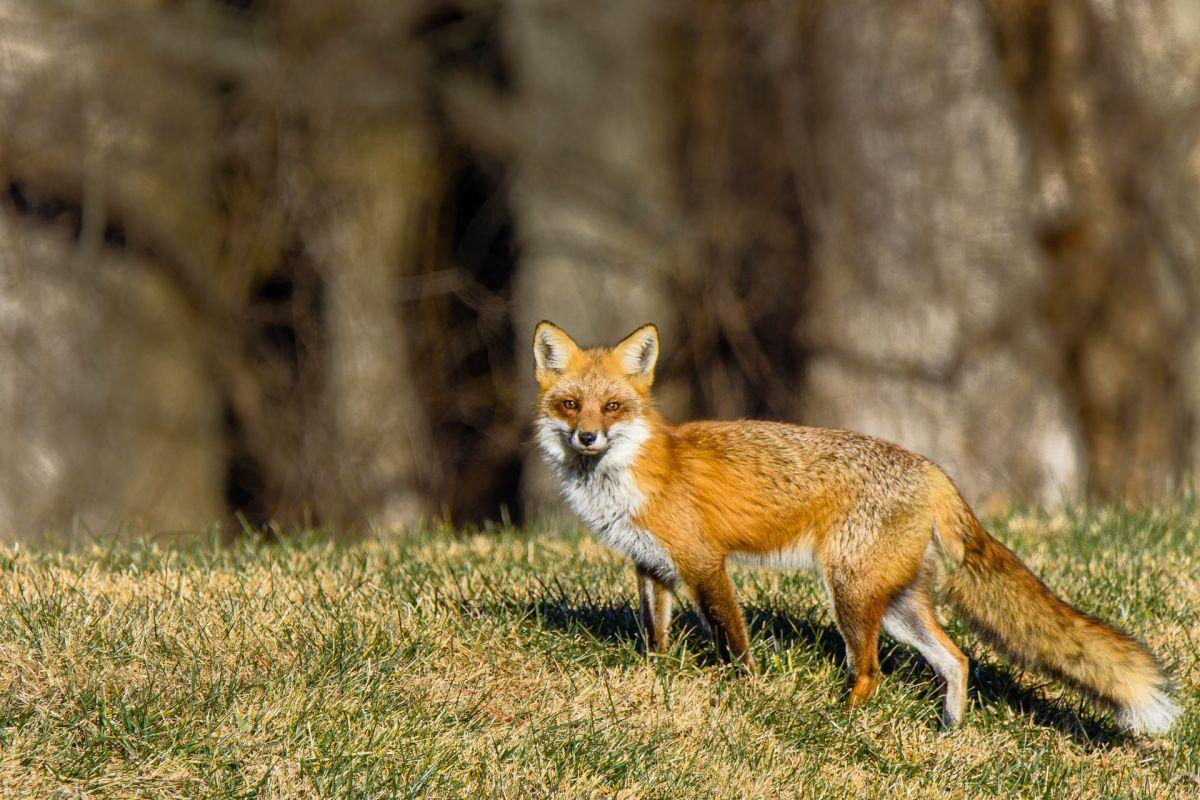
- Name: Red fox
- Scientific name: Vulpes vulpes
- Conservation status:
The red fox is the largest species of true foxes, and one of the most widely distributed carnivores on the planet.
Because of its high adaptability and its ability to live alongside humans and to thrive thanks to human expansion, it is one of the most successful species in the world, and can be found almost anywhere in the Northern Hemisphere, but also in the Middle East, southern Asia, and Australia.
7. Crested porcupine
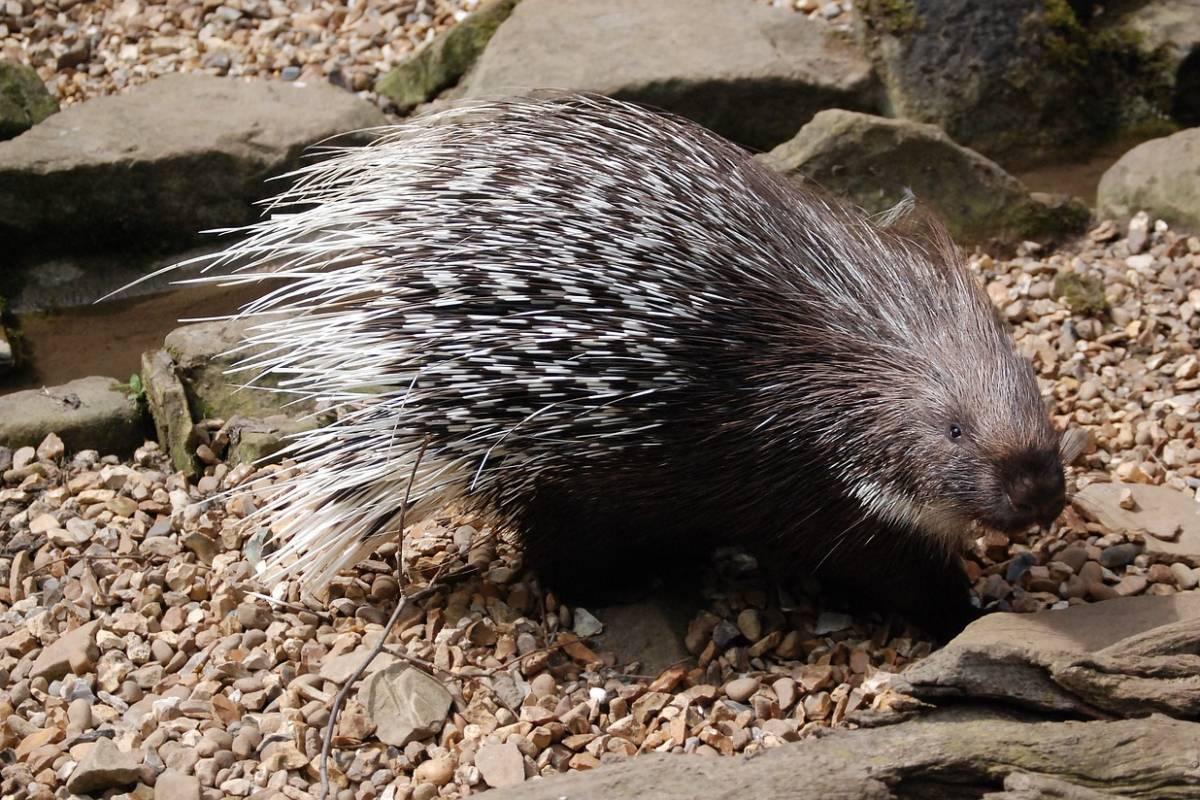
- Name: Crested porcupine
- Scientific name: Hystrix cristata
- Conservation status:
The crested porcupine, also known as the African crested porcupine, is a large species of rodent native to North Africa, Italy, and sub-Saharan Africa.
Recognizable thanks to its long quills, the porcupine is a peaceful animal that is well-adapted to defend itself. The crested porcupine is one of the largest rodents in the world, and it mostly feeds on roots, leaves, and bulbs. Besides, in order to sharpen incisors and ingest calcium, it often gnaws on bones.
8. Common dolphin
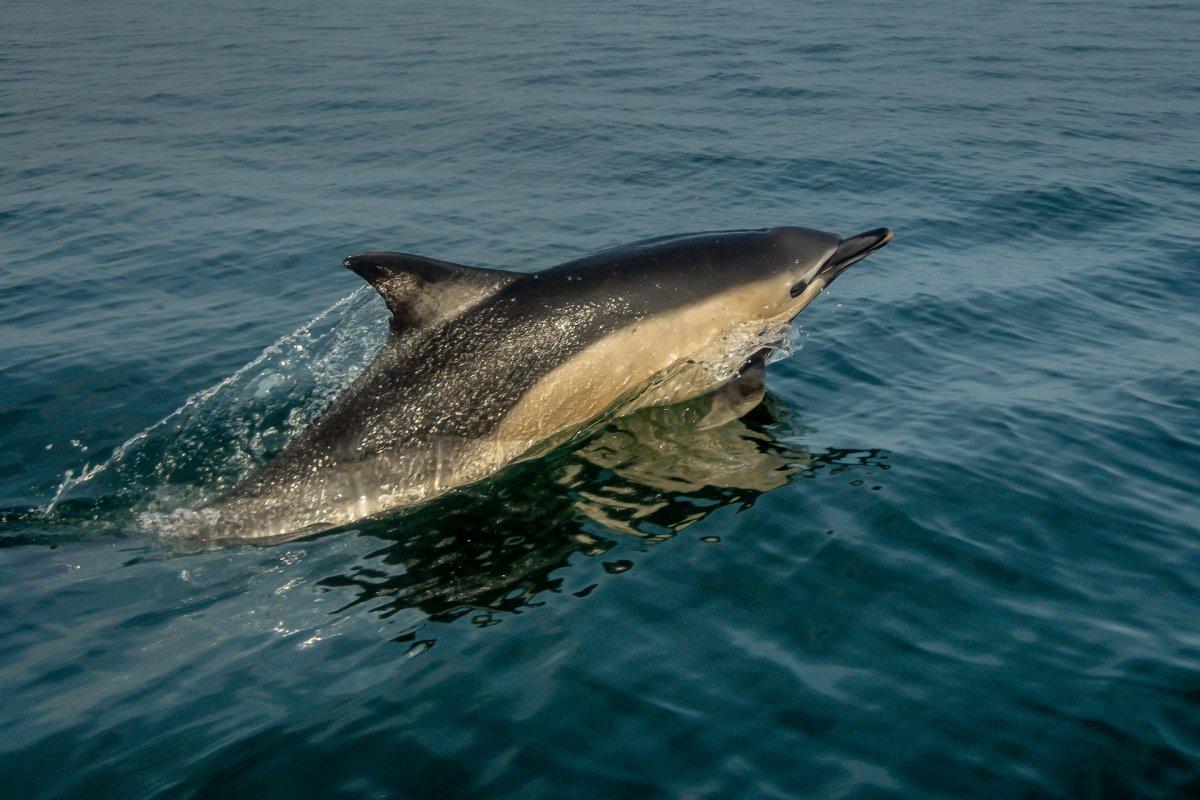
- Name: Common dolphin
- Scientific name: Delphinus delphis
- Conservation status:
The common dolphin is the most widespread and common species of cetacean in the world, with a global population of around 6 million individuals. Despite that, because of the media and aquaria, it is not the classic dolphin that comes to everyone’s mind, which is actually the bottlenose dolphin.
This dolphin lives in warm-temperate and tropical waters of the world, and mostly inhabits shallow, coastal areas. It is known for several mass stranding events, especially in the United Kingdom.
9. Striped hyena
- Name: Striped hyena
- Scientific name: Hyaena hyaena
- Conservation status:
The striped hyena, not as famous as its relative, the spotted hyena or laughing hyena, is a species of hyena native to northern and eastern Africa, the Caucasus, the Middle East, the Indian subcontinent, and Central Asia.
Fewer than 10,000 mature individuals are left in the wild, and they are seriously threatened by persecution as well as the depletion of prey. This animal is primarily a scavenger, but some large specimens have been known to hunt for their own prey, and even attack humans.
10. White stork
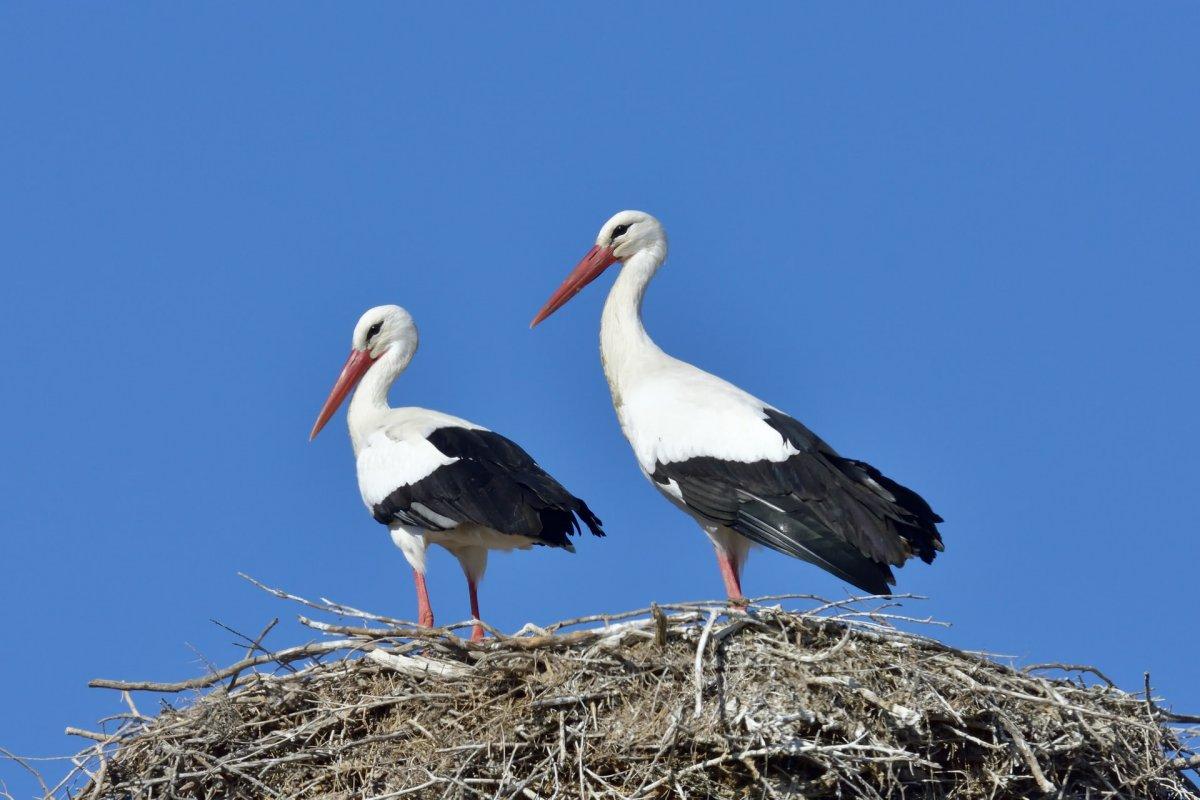
- Name: White stork
- Scientific name: Ciconia ciconia
- Conservation status:
The white stork is a large species of bird that can be found in Europe, the Middle East, Asia, or Africa, depending on the season: it is a migratory bird that spends the winter in warmer areas. In German folklore, it is responsible for bringing babies!
This bird is a carnivore and feeds on a wide range of insects, amphibians, reptiles, and fish, as well as small mammals and birds. Although listed as least concern, its global population is on the decline, and conservation and reintroduction efforts are happening all around Europe.
11. Golden eagle

- Name: Golden eagle
- Scientific name: Aquila chrysaetos
- Conservation status:
The golden eagle is a large species of bird of prey native to much of the Northern Hemisphere. It is the most widely distributed species of eagle, and one of the best-known birds of prey.
This eagle is incredibly agile, powerful, and swift, and hunts a variety of prey, mostly hares, rabbits, ground squirrels, and marmots. It builds its nest in cliff faces and lives in a large territory of up to 200 km² / 77 sq mi.
12. Loggerhead sea turtle
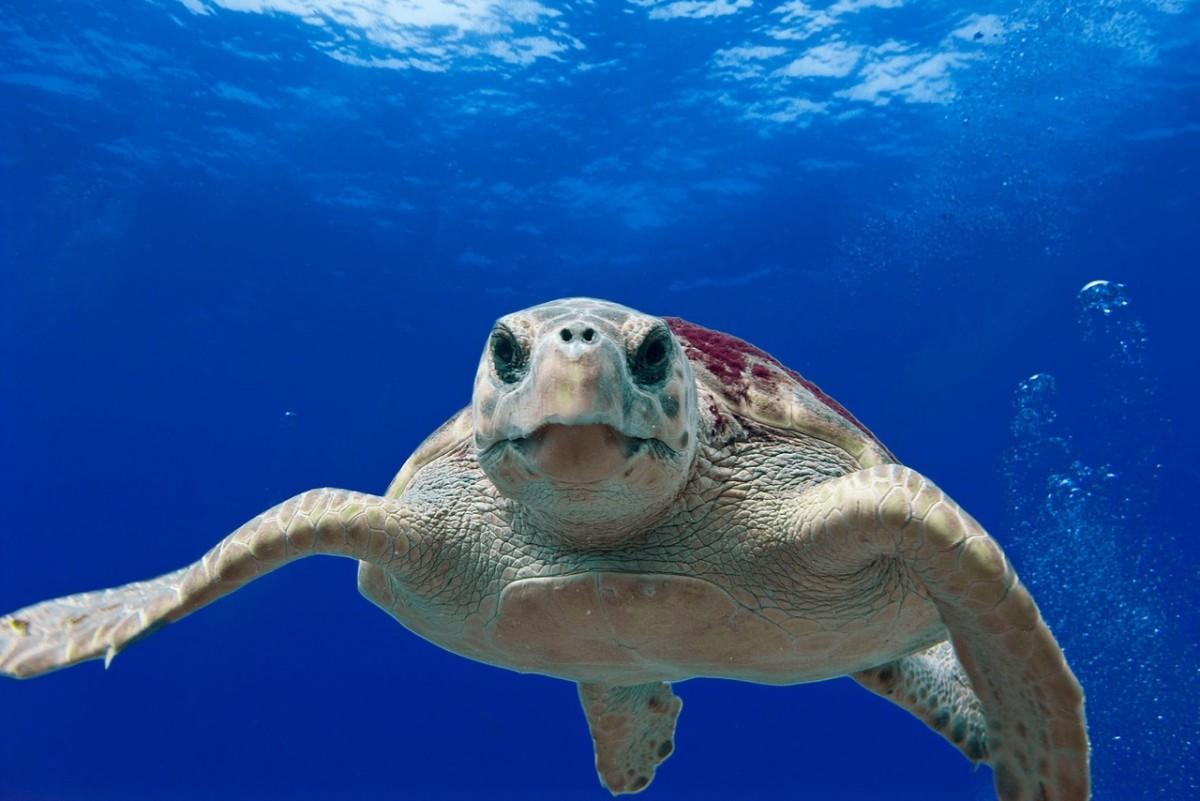
- Name: Loggerhead sea turtle
- Scientific name: Caretta caretta
- Conservation status:
The loggerhead sea turtle is a species of oceanic turtle distributed throughout much of the Atlantic Ocean and the Mediterranean Sea, and parts of the Pacific and Indian Ocean.
Only females briefly come ashore to lay their eggs, and this turtle spends its life in estuarine and saltwater habitats. It is only sexually mature at ages between 17 and 33 years and can live up to 67 years. Because of this very slow reproductive rate, as well as pollution, fishing accidents, and habitat loss, the loggerhead sea turtle is considered vulnerable to extinction.
13. Common gundi
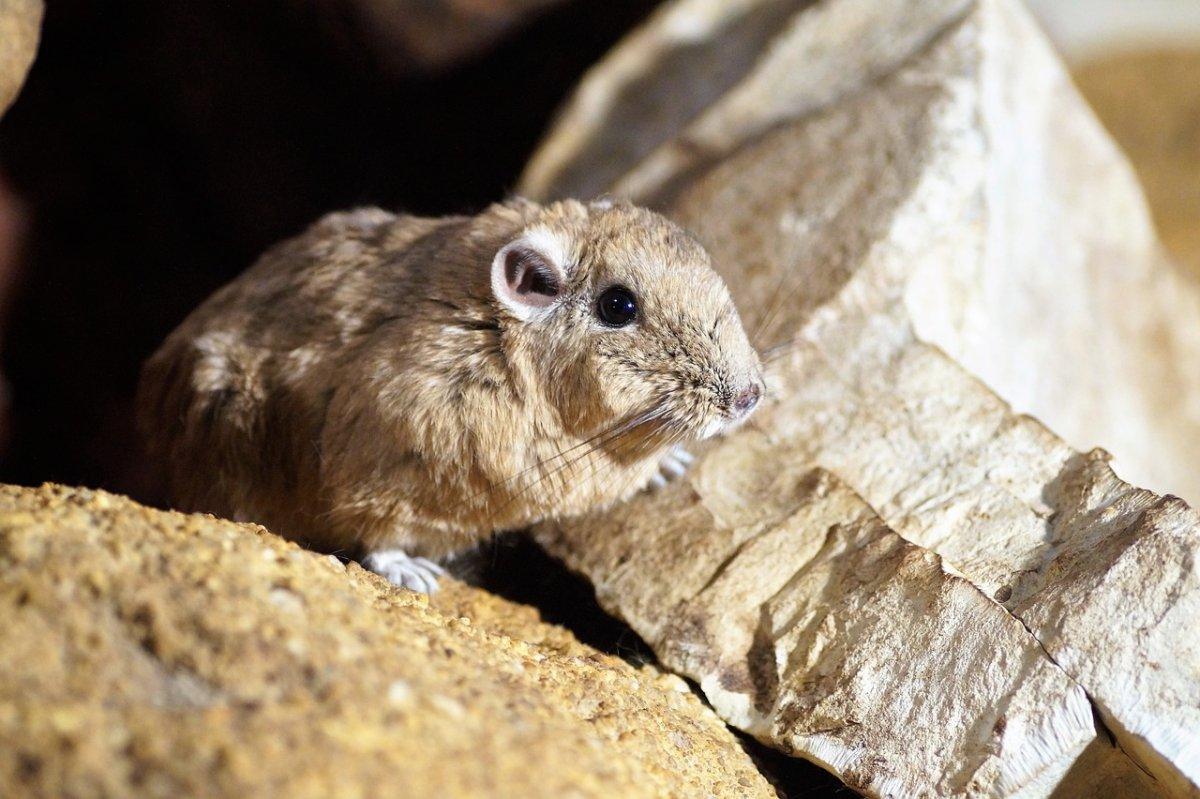
- Name: Common gundi
- Scientific name: Ctenodactylus gundi
- Conservation status:
The common gundi is a species of rodent native to Libya, Algeria, Morocco, and Tunisia. It resembles a guinea pig and lives at elevations up to 2,900 m / 9,500 ft. In Libya, it lives in the far northwestern parts of the country, usually in rocky, arid places.
This rodent is active by day and is herbivorous. Within its range, it is fairly common, and faces no serious threats; thanks to this, it has been listed as least concern.
14. Scimitar oryx
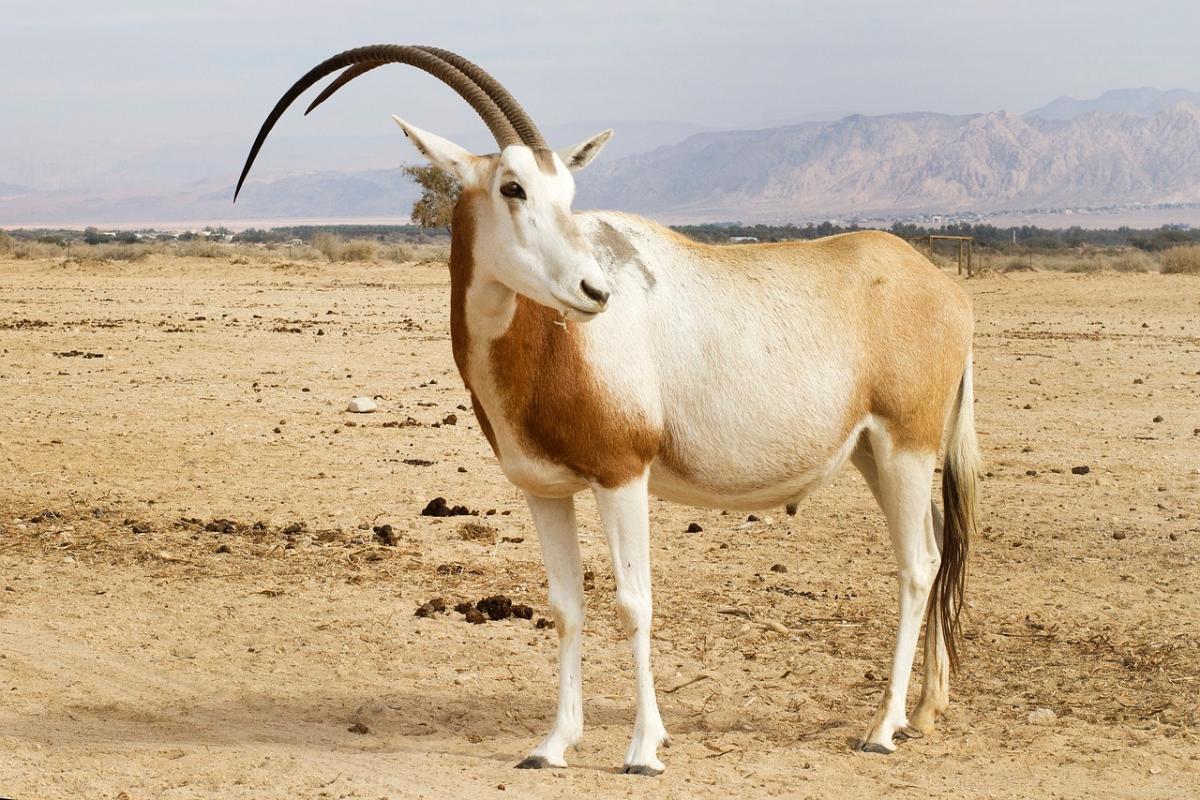
- Name: Scimitar oryx
- Scientific name: Oryx dammah
- Conservation status:
Most certainly one of the main emblems of North Africa as a whole, the scimitar oryx, also known as the Sahara oryx or the scimitar-horned oryx, is a large species of antelope that was once widespread across all of North Africa.
Sadly, it was declared extinct in the wild in 2000 because of roadkill, firearm and cattle introduction and human expansion. More and more groups of scimitar oryxes are being released into the wild, and there is hope for the future of this species.
15. Dromedary

- Name: Dromedary
- Scientific name: Camelus dromedarius
- Conservation status:
The dromedary, also known as the one-humped camel, the dromedary camel, or the Arabian camel, is a large species of ungulate native to North Africa and the Middle East; it has also been introduced to central-western Australia.
This species, different from the camel with its single hump, has been widely domesticated, and is an important means of transportation in isolated areas, although cars are becoming more and more common. It was first domesticated in the Arabian Peninsula about 4,000 years ago and is still used to this day, even as a tourist attraction.
16. North African elephant shrew
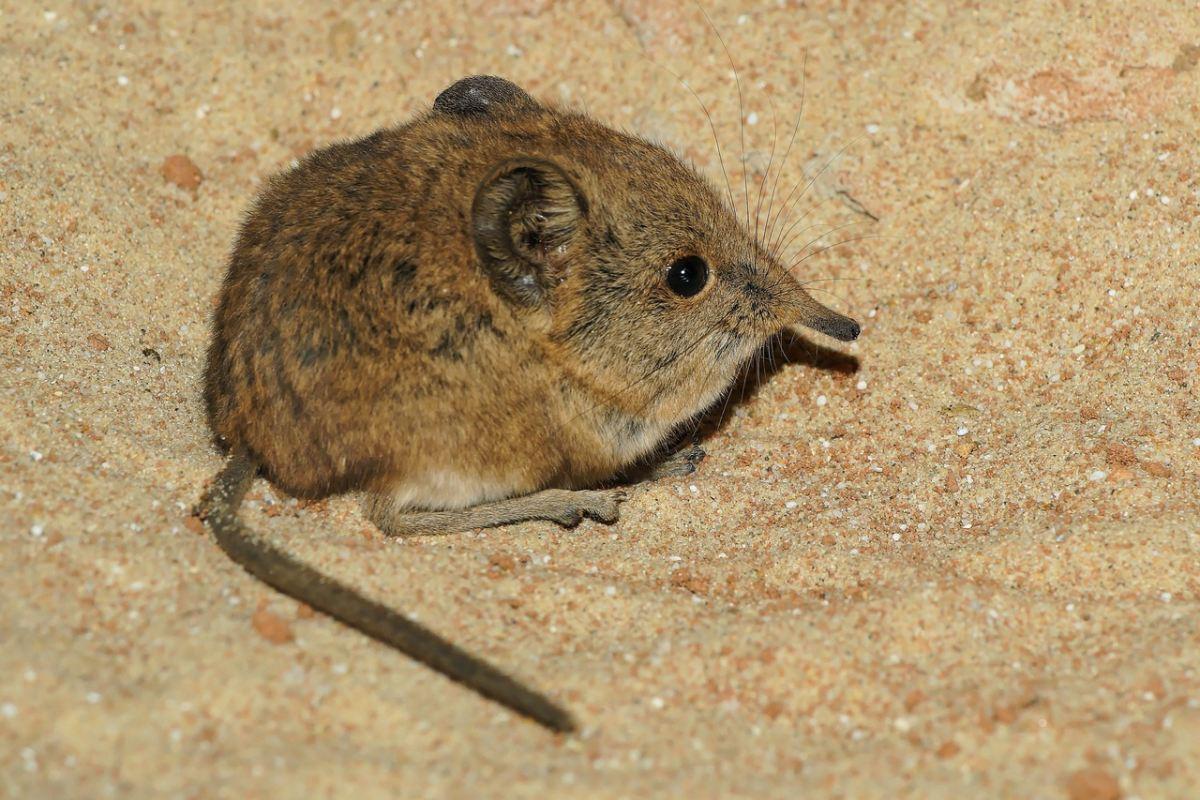
- Name: North African elephant shrew
- Scientific name: Petrosaltator rozeti
- Conservation status:
The North African elephant shrew, also known as the North African sengi, is a species of shrew native to Libya, Algeria, Morocco, and Tunisia. Similarly to most rodents, it has a small body, a long tail, and large ears; its unique feature is its elephant-like, long snout which is particularly sensible.
This shrew inhabits Mediterranean-type shrubby vegetation and deserts and gives birth to litters of 1 to 4 newborns twice per year.
17. Saharan horned viper
- Name: Saharan horned viper
- Scientific name: Cerastes cerastes
- Conservation status:
The Saharan horned viper, also known as the desert horned viper, is a species of venomous snake native to the deserts of northern Africa, as well as the Levant (Jordan, Israel, Lebanon, Palestine, and Syria) and the Arabian Peninsula.
This viper has what looks like horns on top of its head, hence its name, and leaves whole-body impressions on the sand when moving. It strikes particularly rapidly and holds onto its prey until the venom takes effect.
18. Rhim gazelle
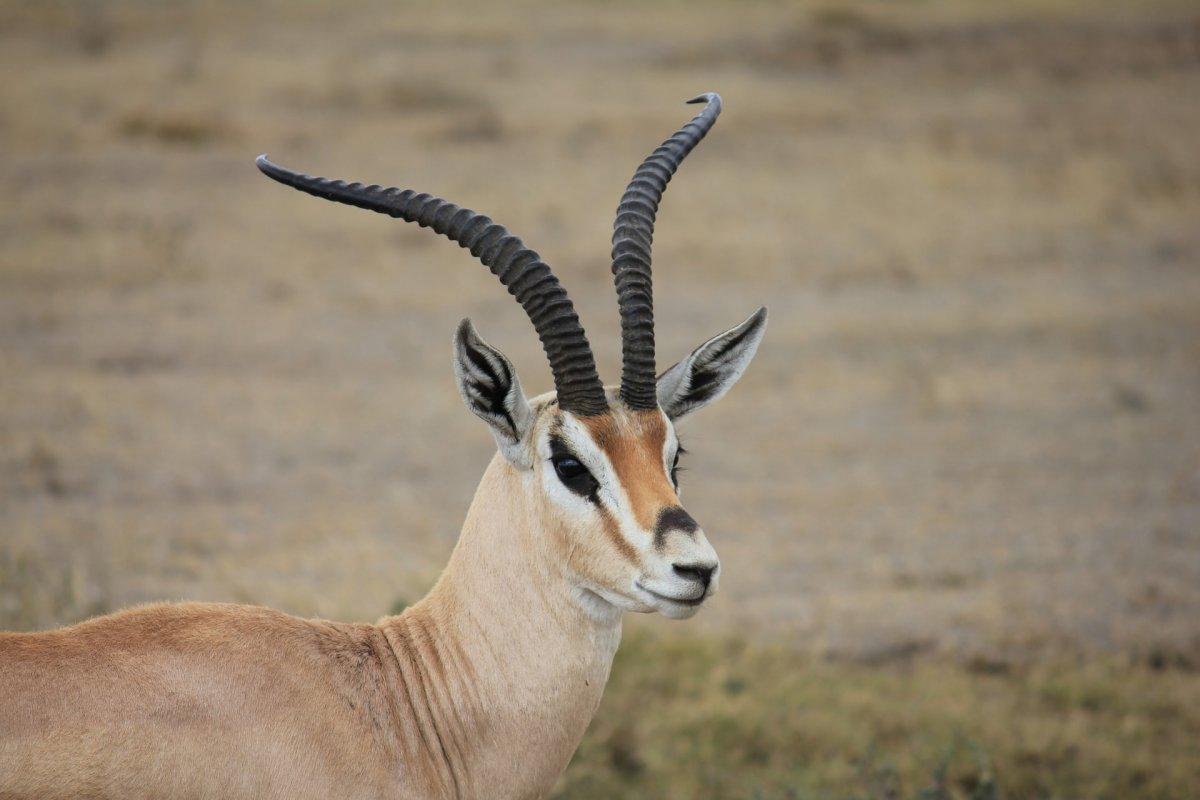
- Name: Rhim gazelle
- Scientific name: Gazella leptoceros
- Conservation status:
The rhim gazelle, also known as the African sand gazelle, the slender-horned gazelle, or Loder’s gazelle, is a species of gazelle well adapted to desert habitats. It can be found around the Sahara, from Libya to Mali, and fewer than 2,500 individuals are left in the wild. This is due to overhunting, poaching, habitat loss, and human disturbance, and it has been in serious decline since the beginning of the 1970s after the introduction of cars.
19. Four-toed jerboa
- Name: Four-toed jerboa
- Scientific name: Allactaga tetradactyla
- Conservation status:
The four-toed jerboa is a species of rodent native to Libya and Egypt. It lives in deserts and coastal salt marshes, in a fairly restricted area. Although it is listed as data deficient, because of the size of its range and habitat loss, it might actually be vulnerable, and even critically endangered.
This jerboa has unusually large hind legs, as well as a long tail, ideal for balance. It emerges at night and feeds on leaves, soft seeds, and grasses.
20. Houbara bustard
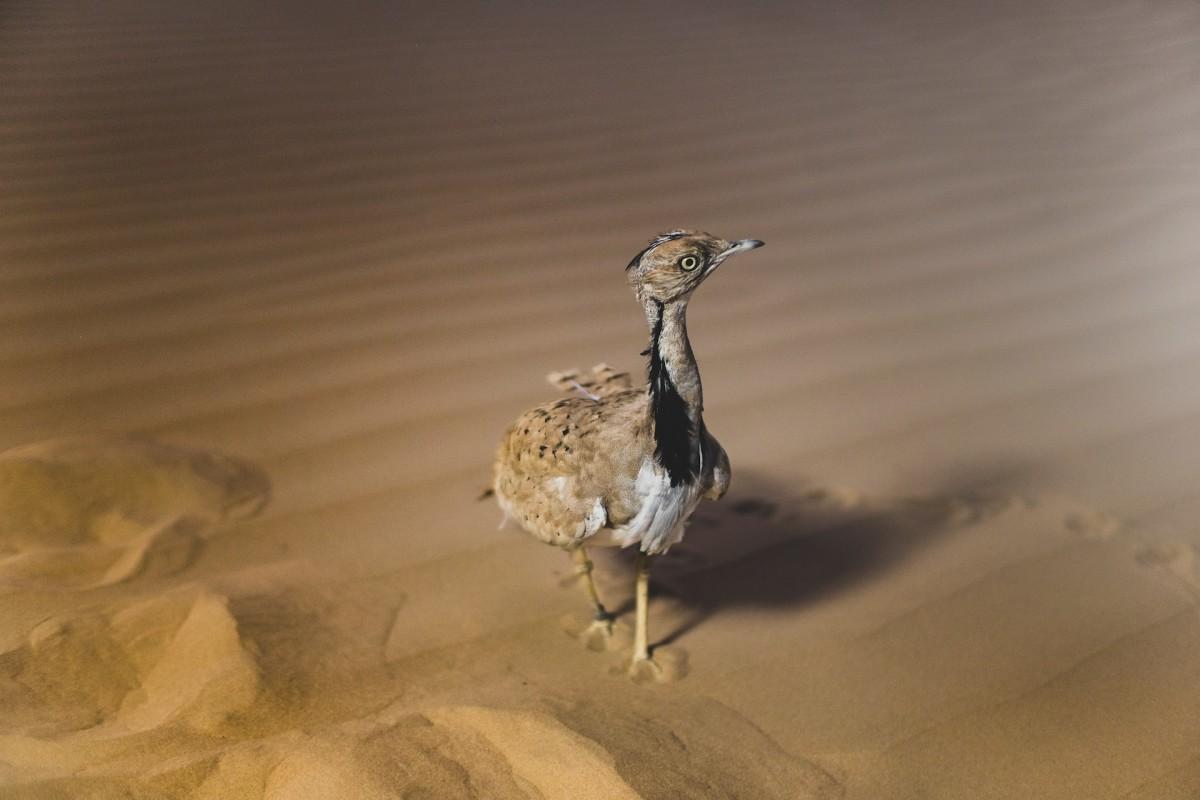
- Name: Houbara bustard
- Scientific name: Chlamydotis undulata
- Conservation status:
The houbara bustard, also known as the African houbara, is a small species of bustard native to North Africa. It inhabits arid areas and has been listed as vulnerable since 2014. In Europe, it is considered near threatened, and can only be found in the Canary Islands. Its main threats are hunting by falconers and habitat loss.
This bustard is omnivorous and feeds on anything from seeds to insects and small creatures.
21. Addax
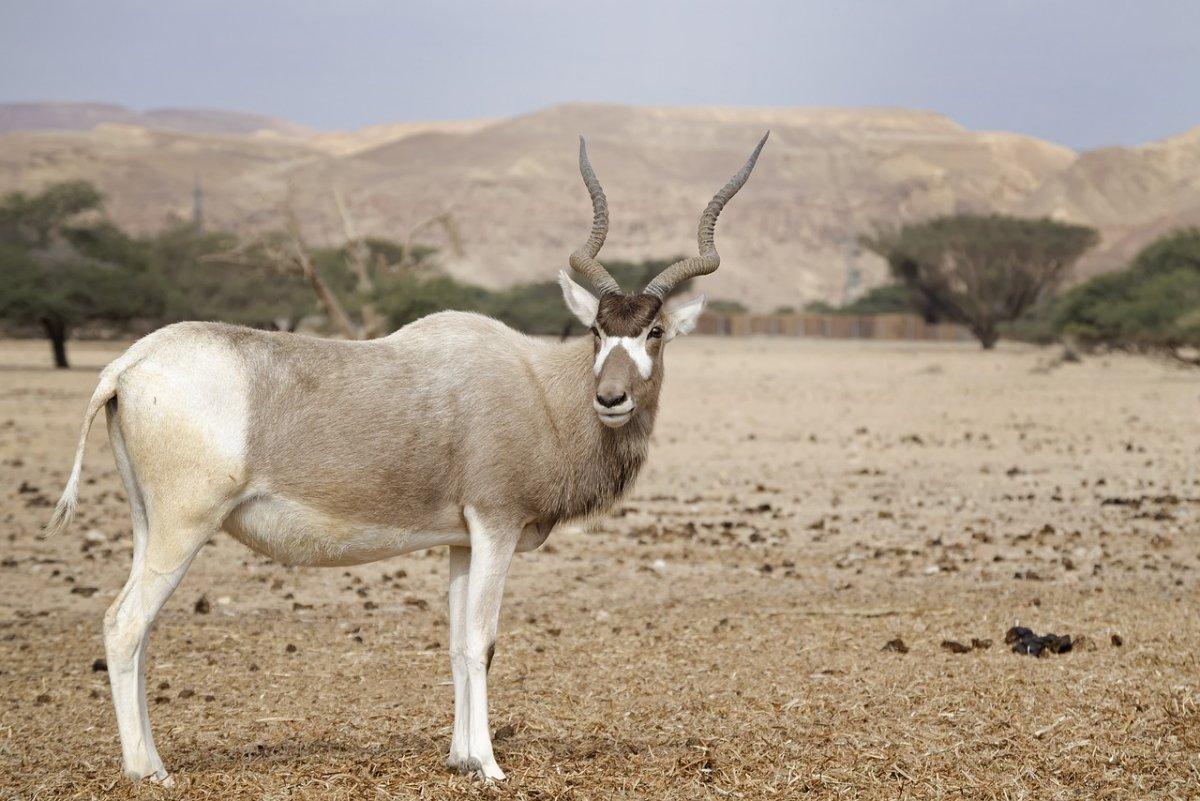
- Name: Addax
- Scientific name: Addax nasomaculatus
- Conservation status:
The addax, also known as the white antelope or the screwhorn antelope, is a species of antelope native to the Sahara Desert. As its name implies, it has long, twisted horns that can reach up to 85 cm / 33 in.
This antelope mostly feeds on leaves and grasses and is well adapted to its desert habitat, being capable of living without water for extended periods of time.
—
So there you have them, these were my 21 wild animals in Libya. I hope you enjoyed this list and that you learned something new today.
In case you want to learn more about animals in the country, feel free to keep reading, as I still have lots of things to tell you about:
Endangered Animals of Libya
This is definitely the saddest part of the list, but it is very important to raise awareness. Because of this, let’s go through the list of endangered animals in Libya.
Here are the animals in danger of extinction in Libya.
- Scimitar-horned oryx
- Angelshark
- Addax
- Great hammerhead
- Slender-billed curlew
- Balearic shearwater
- and 14 more…
- Spinetail devil ray
- Mediterranean monk seal
- Slender-horned gazelle
- Dusky shark
- Shortfin mako
- and 15 more…
To see the full list of endangered species in Libya, head over to the International Union for Conservation of Nature’s Red List.
What is the National Animal of Libya?
The national animal of Libya is the eagle of Saladin.
The eagle of Saladin, also known as the Republican eagle or the Egyptian eagle, is an important symbol in the Arab world. It is a heraldic symbol that serves as the national symbol of several countries, including Libya, Egypt, Iraq, and Palestine, and it is a strong emblem of Arab nationalism, especially in countries that went through anti-imperialist political change starting in the 1950s.
In Libya, this eagle can be found everywhere, from government documents to team uniforms. It is a symbol of freedom, transcendence, power, and shared responsibility in raising children. It originated from Saladin, the first Sultan of Egypt.
How Many Animals Native to Libya?
What is the diversity of native animals in Libya?
Let’s look at the total number of species of Chordata (mammals, birds, fishes, and reptiles).
Total number of animal species in Libya: 836 (2,967 in total in North Africa)
Is Libya full of snakes?
There are definitely lots of different snakes in Libya, but the country has one of the poorest reptile species in all of Africa, so I cannot say that it is “full of snakes” either.
Some of the snake species that you can find in Libya are the Saharan horned viper, the viperine water snake, the blunt-nosed viper, the schokari sand racer, the long-nosed worm snake, and the diadem snake.
Are there giraffes in Libya?
Nowadays, no, there are no more giraffes in Libya.
However, thousands of years ago, the tallest land animal in the world used to live in the far southwest of the country, alongside other large species such as the African elephant or the rhinoceros. Back then, the land was very fertile, but now it is mostly a desert, and only striped hyenas, gazelles, golden wolves, and African wildcats can be found there.
More About Animals in the World!
Loved these Libya animal facts? Want to see what animals live in other countries?
Then check out these posts:
Or click here to see ALL the facts up on the blog! Spoiler alert: there’s A LOT of them.
Share the knowledge! Click on the buttons below to share information about these famous animals in Libya with your friends, and help them learn more about the world 🙂
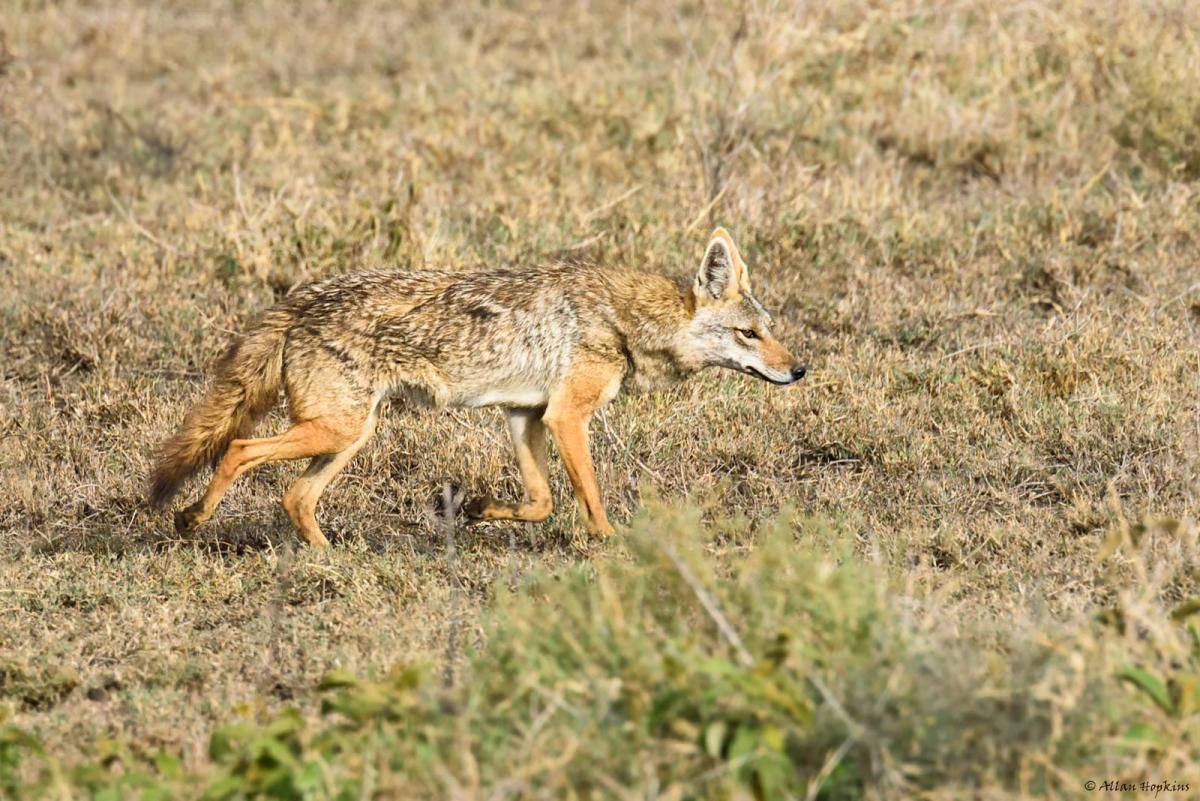
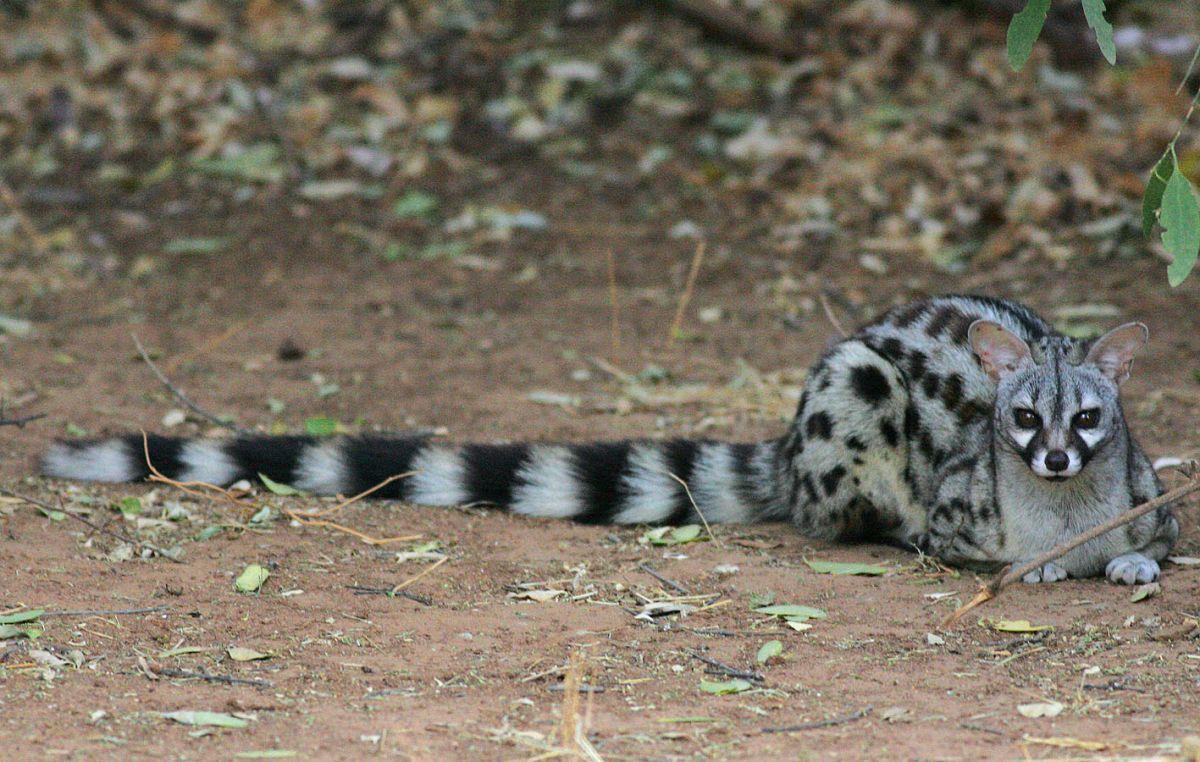
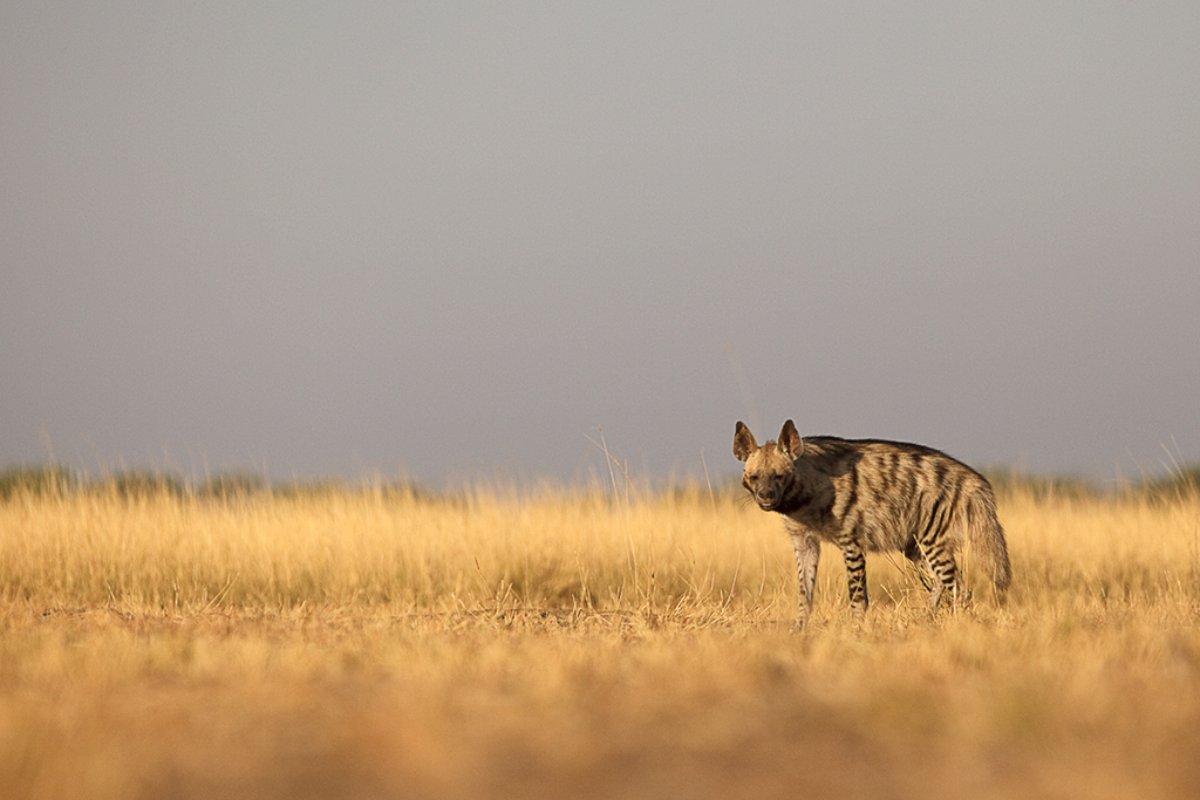
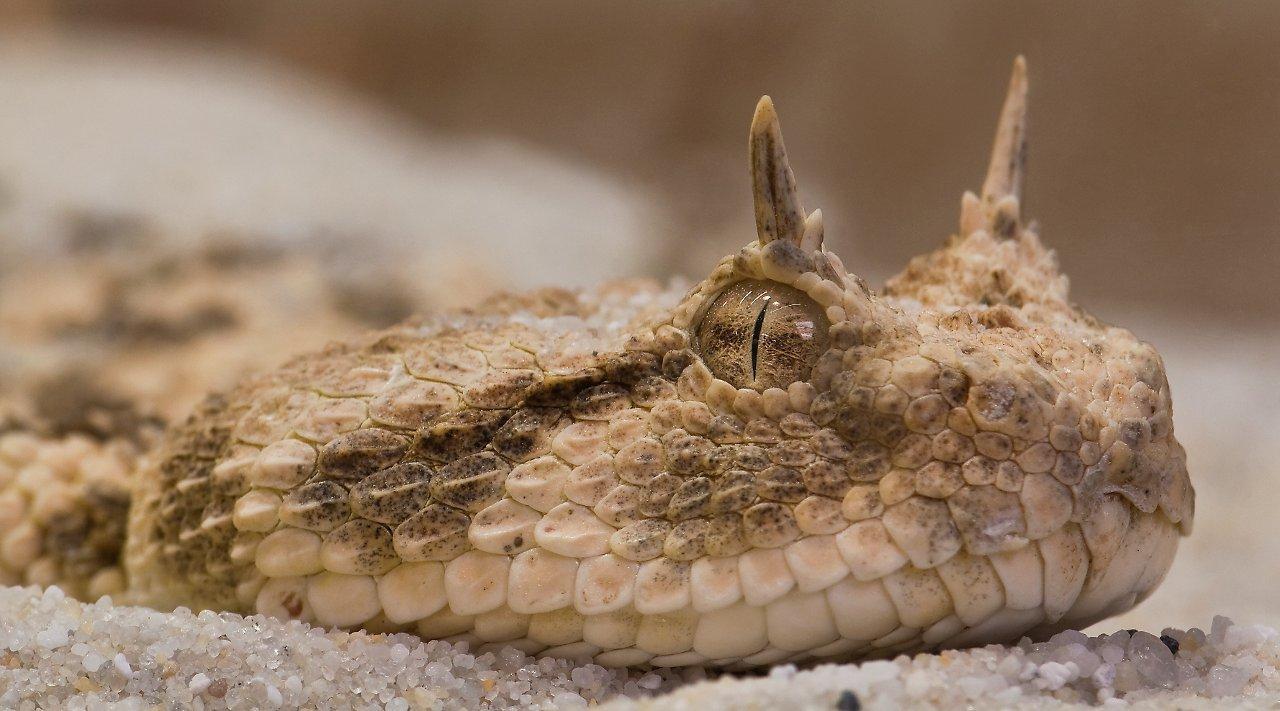
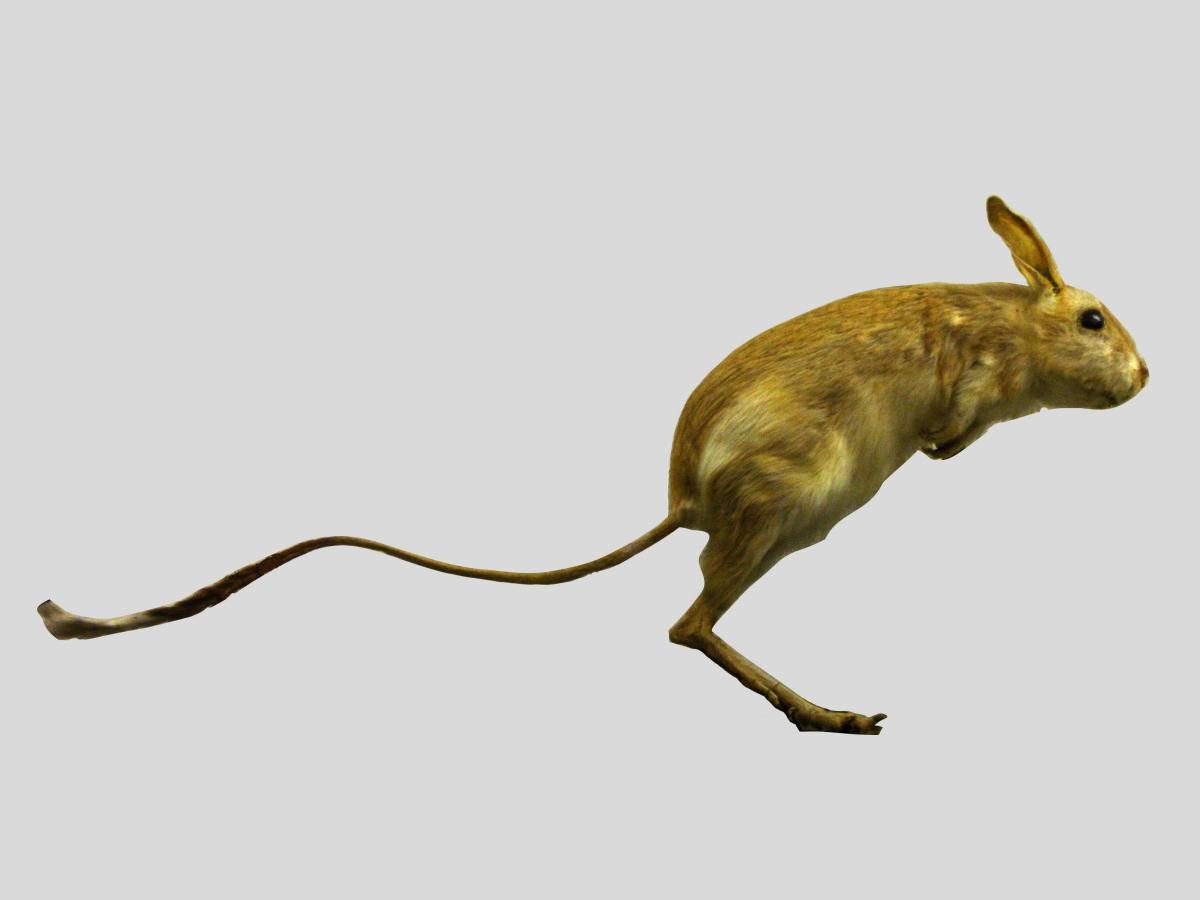

![18 Wild Animals in the Netherlands [Wildlife in the Netherlands]](https://www.kevmrc.com/wp-content/uploads/2022/06/18-wild-animals-in-the-netherlands.jpg)
![20 Wild Animals in Tanzania [Wildlife in Tanzania]](https://www.kevmrc.com/wp-content/uploads/2022/12/20-wild-animals-in-tanzania.jpg)
![18 Wild Animals in Congo [Wildlife in Congo]](https://www.kevmrc.com/wp-content/uploads/2022/12/18-wild-animals-in-congo.jpg)